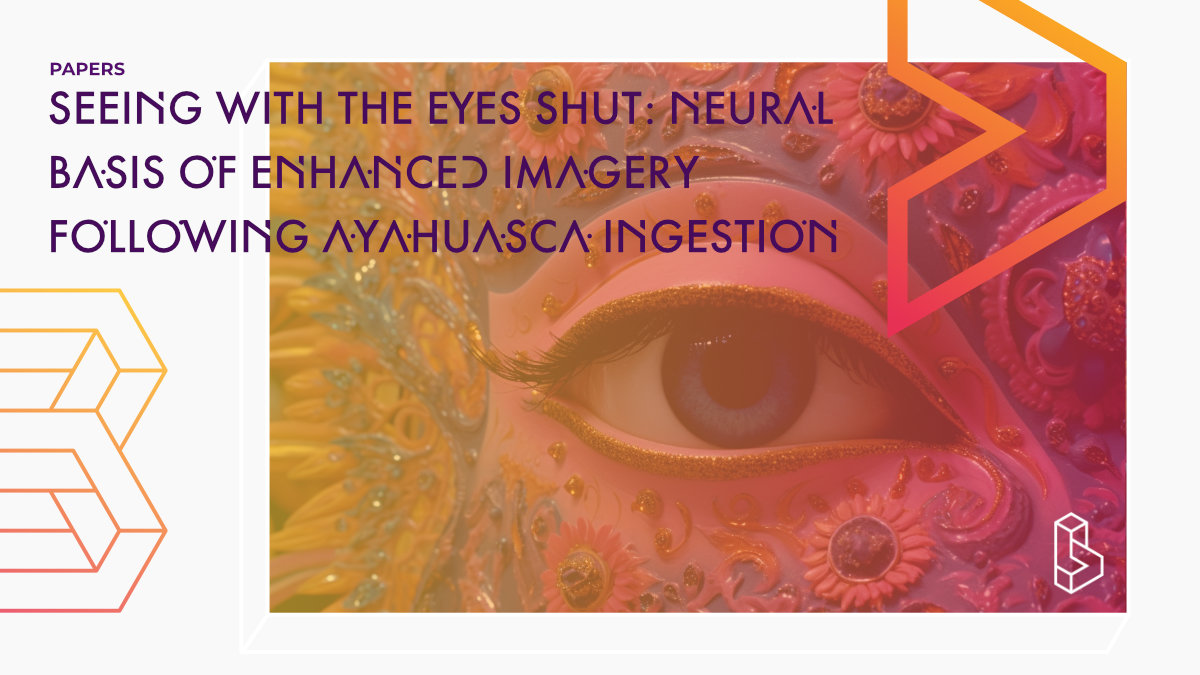This study (n=10) details the neural correlates of ayahuasca-induced visual experiences and suggests that such experiences can be as visually intense and real as natural vision.
Abstract of Seeing with the eyes shut
“The hallucinogenic brew Ayahuasca, a rich source of serotonergic agonists and reuptake inhibitors, has been used for ages by Amazonian populations during religious ceremonies. Among all perceptual changes induced by Ayahuasca, the most remarkable are vivid “seeings.” During such seeings, users report potent imagery. Using functional magnetic resonance imaging during a closed‐eyes imagery task, we found that Ayahuasca produces a robust increase in the activation of several occipital, temporal, and frontal areas. In the primary visual area, the effect was comparable in magnitude to the activation levels of natural image with the eyes open. Importantly, this effect was specifically correlated with the occurrence of individual perceptual changes measured by psychiatric scales. The activity of cortical areas BA30 and BA37, known to be involved with episodic memory and the processing of contextual associations, was also potentiated by Ayahuasca intake during imagery. Finally, we detected a positive modulation by Ayahuasca of BA 10, a frontal area involved with intentional prospective imagination, working memory and the processing of information from internal sources. Therefore, our results indicate that Ayahuasca seeings stem from the activation of an extensive network generally involved with vision, memory, and intention. By boosting the intensity of recalled images to the same level of natural image, Ayahuasca lends a status of reality to inner experiences. It is therefore understandable why Ayahuasca was culturally selected over many centuries by rain forest shamans to facilitate mystical revelations of visual nature. “
Authors: Draulio B. de Araujo, Sidarta Ribeiro, Guillermo A. Cecchi, Fabiana M. Carvalho, Tiago A. Sanchez, Joel P. Pinto, Bruno S. de Martinis, Jose A. Crippa, Jaime E. C. Hallak & Antonio C. Santos
Summary of Seeing with the eyes shut
Ayahuasca, a central pillar of Amerindian traditional medicine, has been used by rainforest populations during religious ceremonies. It has been legalized in Brazil and the United States.
Ayahuasca is a tea prepared by decocting Psychotria viridis and Banisteriopsis caapi. It contains DMT and b-carbolines, which inhibit MAO and increase levels of 5-HT.
The ability to generate visual mental imagery has long been a subject of research. Previous studies have shown that the primary visual area (V1; Brodmann area 17, BA17) is involved in imagery, but the participation of associative visual areas has also been reported.
Find this paper
Seeing with the eyes shut: Neural basis of enhanced imagery following ayahuasca ingestion
https://doi.org/10.1002/hbm.21381
Open Access | Google Scholar | Backup | 🕊
Cite this paper (APA)
De Araujo, D. B., Ribeiro, S., Cecchi, G. A., Carvalho, F. M., Sanchez, T. A., Pinto, J. P., ... & Santos, A. C. (2012). Seeing with the eyes shut: Neural basis of enhanced imagery following ayahuasca ingestion. Human brain mapping, 33(11), 2550-2560.
Study details
Compounds studied
Ayahuasca
Topics studied
Neuroscience
Study characteristics
Open-Label
Bio/Neuro
Participants
10
Humans

